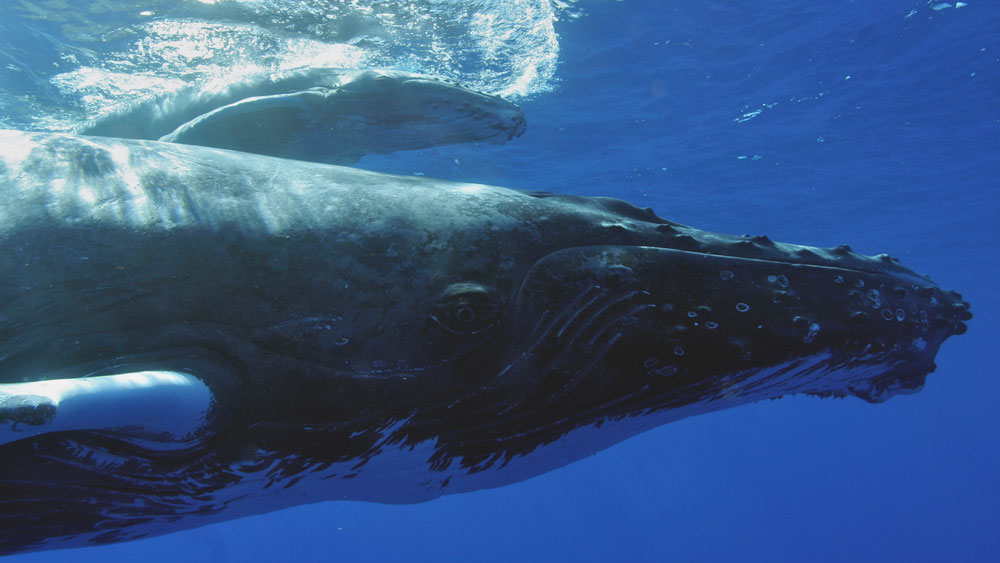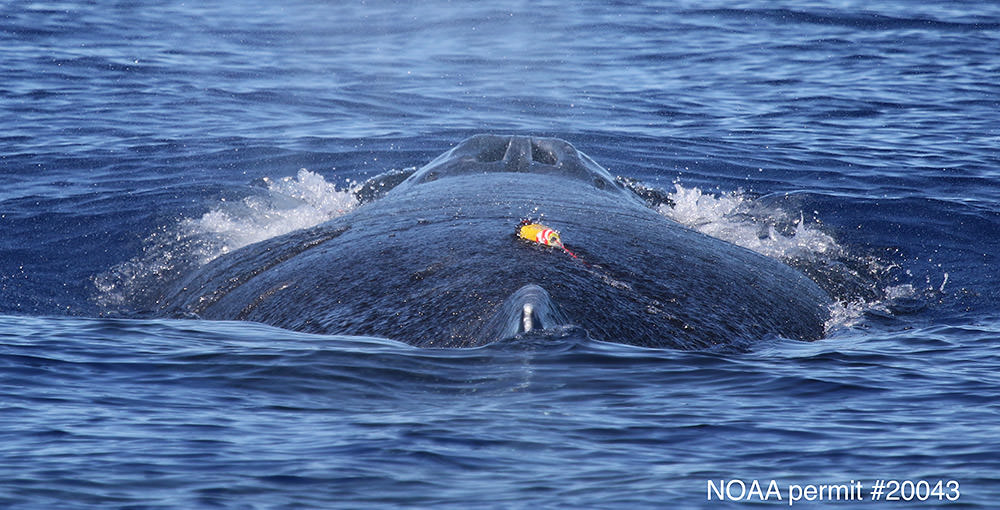Whale Behavior

Understanding the Function of Humpback Whale Song
Male humpback whales produce a complex song during the breeding season that is thought to play an important role in mediating reproductive behavior. The exact function of song remains a matter of scientific debate. However, it is generally believed to be a display of competitive fitness, with behavioral evidence suggesting that the display is directed toward other males, rather than an attempt by males to attract females.
To investigate whether song might convey information about male fitness, sanctuary researchers are examining the variability of song produced by individual whales in a collaborative study with the University of Hawai‘i at Hilo and the University of Alaska Fairbanks. Singing whales off Maui are located and then recorded by divers using a calibrated recorder/video camera system along with a handheld dive sonar to establish distance to the animal. Researchers use underwater videogrammetry to establish the size of each singer and obtain biopsy samples to measure steroid hormone levels. These data are then combined in order to examine the relationship between song characteristics, singer size, and testosterone levels.
Tagging Humpback Whales to Understand Their Behavior

Although humpback whales have been studied in Hawai‘i for decades, much of their behavior remains a mystery. For example, little is known about what whales do at night and whether their activities differ from those observed during the day. Very little is also known about how whales respond to acoustic disturbances, such as vessel traffic and other sources of human-generated noise.
The sanctuary plays a leading role in a collaborative partnerships with researchers at various academic institutions, including the University of Hawai‘i, Syracuse University, and others, to examine these and other open questions about whale behavior through the use of sensor tags placed on whales using suction cups. These tags measure sound, dive behavior, and the whale’s three-dimensional movements, and in some cases capture video footage. The data generated provide unique insights into what whales do when they slip under the surface and out of view, allowing us to examine questions about their communication, movements, and activity levels.

